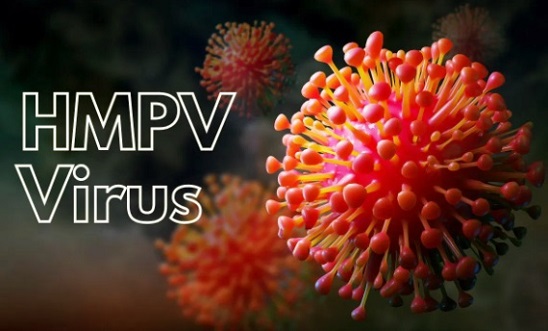The Antiviral Potential of HRA2pl Fusion Peptide Derived from the Tobacco Plant Against Human Pneumovirus (HMPV)
Nikhil Prasad Fact checked by:Thailand Medical News Team Jan 12, 2025 3 months, 1 day, 11 hours, 46 minutes ago
Medical News: Breakthroughs in Antiviral Research
A groundbreaking study has unveiled the antiviral potential of a unique peptide derived from the tobacco plant, known as HRA2pl, against human metapneumovirus (HMPV). This discovery is the result of a collaborative effort between researchers from the Universidad Nacional Autónoma de México (UNAM) in Mexico and the University of Kansas in the United States. The HRA2pl peptide demonstrates significant promise as a therapeutic agent by effectively inhibiting the virus's ability to infect human cells in vitro. HMPV is a leading cause of acute respiratory tract infections (ARTIs), posing severe risks to children under five, the elderly, and immunocompromised individuals.
 The Antiviral Potential of HRA2pl Fusion Peptide Derived from the Tobacco Plant Against Human
The Antiviral Potential of HRA2pl Fusion Peptide Derived from the Tobacco Plant Against Human
Pneumovirus (HMPV)
This
Medical News report explores the detailed findings of the study and sheds light on how HRA2pl could revolutionize the treatment of respiratory infections caused by HMPV and related viruses.
Understanding Human Metapneumovirus (HMPV)
HMPV is a member of the Pneumoviridae family, closely related to the human respiratory syncytial virus (HRSV). These viruses are primary culprits of respiratory illnesses, ranging from mild cold-like symptoms to severe complications such as bronchiolitis and pneumonia. HMPV accounts for approximately 5 - 15% of ARTIs globally, often leading to hospitalizations, particularly in high-risk populations.
Current treatments for these infections are limited. While monoclonal antibodies like palivizumab target the fusion (F) protein of related viruses such as HRSV, their efficacy is moderate, and costs remain prohibitive. This has led scientists to explore alternative therapeutic options, including antiviral peptides that disrupt the virus's entry into host cells.
The HRA2pl Peptide: A Tobacco-Derived Antiviral
The HRA2pl peptide is a recombinant protein derived from Nicotiana benthamiana, a relative of the common tobacco plant. It is engineered to mimic a heptad repeat (HR) domain within the F protein of HMPV. The HR domains play a critical role in the viral fusion process, enabling the virus to merge with host cell membranes. By targeting this mechanism, HRA2pl interferes with the fusion process, effectively preventing viral entry.
The peptide was produced using a transient expression system in tobacco plants, a method known for its scalability and cost-effectiveness. This innovative approach ensures the production of high-purity peptides suitable for therapeutic applications.
Key Findings of the Study
The study evaluated the antiviral activity of HRA2pl against HMPV, as well as other respiratory viruses like HRSV and human parainfluenza virus type 2 (HPIV-2). Key findings include:
-Reduction in Viral Entry
HRA2pl demonstrated a remarkable ability to in
hibit viral entry into host cells. In vitro assays revealed a four-log reduction in the viral titer of HMPV after treatment with the peptide. This indicates a drastic decrease in the number of infectious viral particles.
-Impact on Syncytium Formation
Syncytia, or giant multinucleated cells, are hallmarks of respiratory virus infections. They form when infected cells fuse with neighboring cells, facilitating viral spread. The study showed that HRA2pl treatment reduced the size of syncytia by approximately 50% in clinical samples. This suggests that the peptide not only inhibits viral entry but also disrupts subsequent stages of infection.
-Broad-Spectrum Activity
Interestingly, HRA2pl exhibited activity against multiple respiratory viruses, including HRSV and HPIV-2. This broad-spectrum efficacy underscores its potential as a versatile antiviral agent, particularly in treating co-infections or cases where precise diagnosis is delayed.
-Safety Profile
Cytotoxicity assays confirmed that HRA2pl is non-toxic to human cell lines at therapeutic concentrations. This is a critical finding, as it indicates the peptide's safety for potential clinical applications.
Implications and Future Directions
The discovery of HRA2pl's antiviral properties opens new avenues for combating respiratory viruses. Unlike traditional therapies, which often target specific viral proteins, HRA2pl's mechanism of action is rooted in disrupting a conserved fusion process shared by many viruses. This positions it as a promising candidate for broad-spectrum antiviral development.
Moreover, the use of plant-based expression systems for peptide production offers a sustainable and cost-effective alternative to conventional pharmaceutical manufacturing. This could make treatments more accessible, particularly in resource-limited settings.
Conclusions
The study conducted by researchers at UNAM and the University of Kansas highlights the significant antiviral potential of the HRA2pl peptide. By targeting the fusion process, HRA2pl effectively inhibits viral entry and reduces the spread of infection within host tissues. Its broad-spectrum activity against respiratory viruses like HMPV, HRSV, and HPIV-2 underscores its versatility and clinical relevance.
The implications of this research are far-reaching. HRA2pl could pave the way for novel treatments that are not only effective but also affordable and scalable. As the world grapples with the burden of respiratory infections, innovations like HRA2pl provide hope for improved management and outcomes.
The study findings were published in the peer-reviewed journal: Frontiers in Cellular and Infection Microbiology.
https://www.frontiersin.org/journals/cellular-and-infection-microbiology/articles/10.3389/fcimb.2023.1125135/full
For the latest HMPV News, keep on logging to Thailand
Medical News.
Read Also:
https://www.thailandmedical.news/news/columbia-university-study-finds-that-the-phytochemical-ginkgolic-acid-can-inhibit-human-metapneumovirus-infectivity
https://www.thailandmedical.news/news/probenecid-shows-promise-against-respiratory-virus-human-metapneumovirus-hmpv
https://www.thailandmedical.news/news/human-metapneumovirus-hmpv-inhibits-cathelicidin-antimicrobial-peptide-expression-in-human-macrophages
https://www.thailandmedical.news/articles/hmpv-human-metapneumovirus
